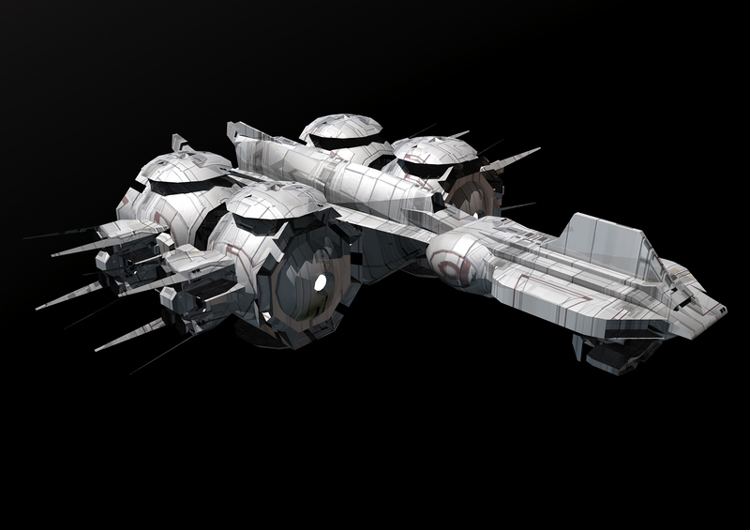Around
this time, various private commercial spacecraft are sent to Alpha Centauri,
Barnard's Star, Wolf 359 and other neighbouring star systems. The fastest
of these are capable of achieving 0.08-0.1c (8-10% lightspeed), requiring
around 40 years to reach their destination.* A variety of propulsion systems are being utilised – from nuclear pulse
propulsion, to solar sail technology, to other more experimental methods.
Most of these vessels are crewless, with only a handful of humans daring enough to attempt such a voyage. However, each craft is equipped with powerful AI, automated systems and robots which do a better job than any human could, in any case.
Protection from incoming meteors is provided by cone-shaped force fields, projected from the front of each craft. This streamlined shape allows such debris to simply drift by without causing any damage.
After several decades of interstellar travel, the majority of probes successfully rendezvous with their destinations. Each returns a treasure trove of data and visual information. Among the many discoveries is a planet similar in size to Earth, with over 90% of its surface covered in liquid water, though no life forms are detected. Another, much larger and rockier world is discovered in the same system, with a highly active geology and volcanism. A host of interesting and unique moons, asteroids, ring systems and other astronomical features are catalogued.
The success of these missions acts as a catalyst, further accelerating the current boom in space travel.

© Luca Oleastri | Dreamstime.com
Most of these vessels are crewless, with only a handful of humans daring enough to attempt such a voyage. However, each craft is equipped with powerful AI, automated systems and robots which do a better job than any human could, in any case.
Protection from incoming meteors is provided by cone-shaped force fields, projected from the front of each craft. This streamlined shape allows such debris to simply drift by without causing any damage.
After several decades of interstellar travel, the majority of probes successfully rendezvous with their destinations. Each returns a treasure trove of data and visual information. Among the many discoveries is a planet similar in size to Earth, with over 90% of its surface covered in liquid water, though no life forms are detected. Another, much larger and rockier world is discovered in the same system, with a highly active geology and volcanism. A host of interesting and unique moons, asteroids, ring systems and other astronomical features are catalogued.
The success of these missions acts as a catalyst, further accelerating the current boom in space travel.

© Luca Oleastri | Dreamstime.com
No comments:
Post a Comment